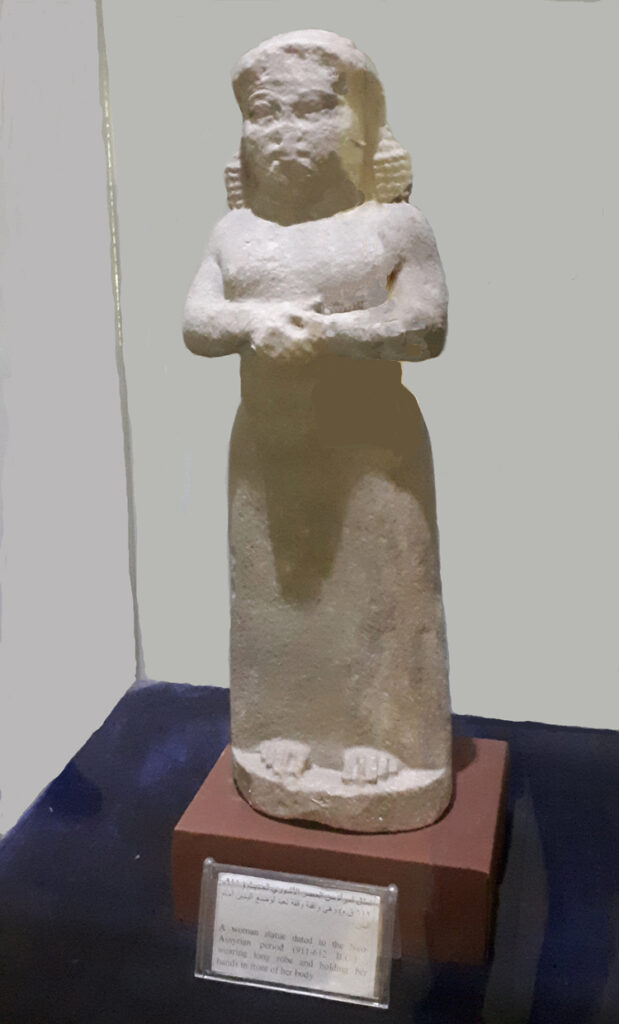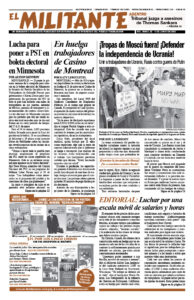Woman’s Evolution: From Matriarchal Clan to Patriarchal Family by Evelyn Reed is one of Pathfinder’s Books of the Month for June. Reed (1905-79) was a leading member of the Socialist Workers Party and participant in the women’s liberation movement of the 1960s and ’70s. She also wrote Problems of Women’s Liberation, Is Biology Woman’s Destiny? and other titles. She was one of the authors of Cosmetics, Fashions, and the Exploitation of Women. This excerpt is from the introduction by Reed to the book. Copyright © 1975 by Pathfinder Press. Reprinted by permission.
The early history of half the human species — womankind — has largely been hidden from view. To bring it to light requires a reinvestigation of anthropology, where the role and accomplishments of women in prehistoric society are buried. This book is a contribution to unveiling that remarkable record.
The resurgence of the women’s liberation movement has thrown the spotlight on certain dubious assumptions and disputed questions regarding the past. Foremost among these is the subject of the matriarchy. Was there a period in history when women held a highly esteemed and influential place? If so, how did they lose their social eminence and become the subordinate sex in patriarchal society? Or is the matriarchy, as some say, a myth that has no historical basis?

The matriarchy is one of the most hotly contested issues in a hundred-year controversy between contending schools in anthropology. This book affirms that the maternal clan system was the original form of social organization and explains why. It also traces the course of its development and the causes of its downfall. Such partisanship on the side of the matriarchy would alone make this book controversial. But it contains other challenges to long-held opinions on prehistoric society.
Disagreements are to be expected in a field that covers so vast a stretch of human evolution, extending from the birth of our species to the threshold of civilization, and where the available data derived from biology, archaeology, and anthropology is fragmentary and uncoordinated.
Anthropology was founded as a distinct science in the middle of the nineteenth century. Most of the founding fathers (women entered the profession only later) had an evolutionary approach. Morgan, Tylor, and other pioneers regarded anthropology as the study of the origin of society and the material forces at work in its progress. They made brilliant beginnings in illuminating the main stages in human development.
Morgan delineated three great epochs of social evolution — from savagery through barbarism to civilization. Each was marked off by decisive advances in the level of economic activity. The most rudimentary stage, savagery, was based on hunting and food-gathering. Barbarism began with food production through agriculture and stock raising. Civilization crowned the development of the ancient world by bringing it to the point of commodity production and exchange.
These three epochs were of extremely unequal duration. Savagery lasted far longer than either of its successors. Although savagery is sometimes differentiated into an earlier “primeval” and a later “primitive” stage, both of these rested upon a hunting and gathering economy. Savagery had a span of a million-odd years, comprising more than 99 percent of human existence. Barbarism began about eight thousand years ago; civilization only three thousand years ago.
The early investigators of savage society, to their own surprise, came upon a social structure totally different from ours. They found a clan and tribal system based on maternal kinship and in which women played a leading role. This stood out in sharp contrast with modern society which features the father-family and male supremacy. Although they were unable to tell how far back the maternal system went, we propose to show that it dates from the beginning of humankind.
They made other astonishing discoveries. They observed that savage society had egalitarian social and sexual relations, arising from collective production and communal possession of property. These features too were at odds with modern society, based on private property and class divisions. Thus the maternal clan system, which gave an honored place to women, was also a collectivist order where the members of both sexes enjoyed equality and did not suffer oppression or discrimination.
Subsequently, these discoveries evoked doubts and resistance from the schools of anthropology that became dominant in the twentieth century. There arose a deep division between evolutionists and anti-evolutionists that has persisted to the present day. It is only through the evolutionary approach, however, that the concealed history of women — and of men — can be uncovered.
The principle of universal evolution had already been applied to the problem of the genesis of Homo sapiens with the publication in 1871 of Darwin’s book The Descent of Man. [H]e demonstrated that the earliest subhumans, the hominids, arose out of the anthropoids. …
The question of the matriarchy is decisive in establishing whether or not the modern father-family has always existed. The very structure of the maternal clan system precluded it. Instead of being the basic social unit from time immemorial, as most anthropologists contend, it is a late arrival in history, appearing only at the beginning of the civilized epoch. …
This is especially true when we consider the outstanding role played by women in ancient times. The knowledge that female inferiority today is not biologically determined, that it has not been a permanent fixture throughout history, and that our sex was once the organizers and leaders of social life, should heighten the self-confidence of women who are today aspiring for liberation.

